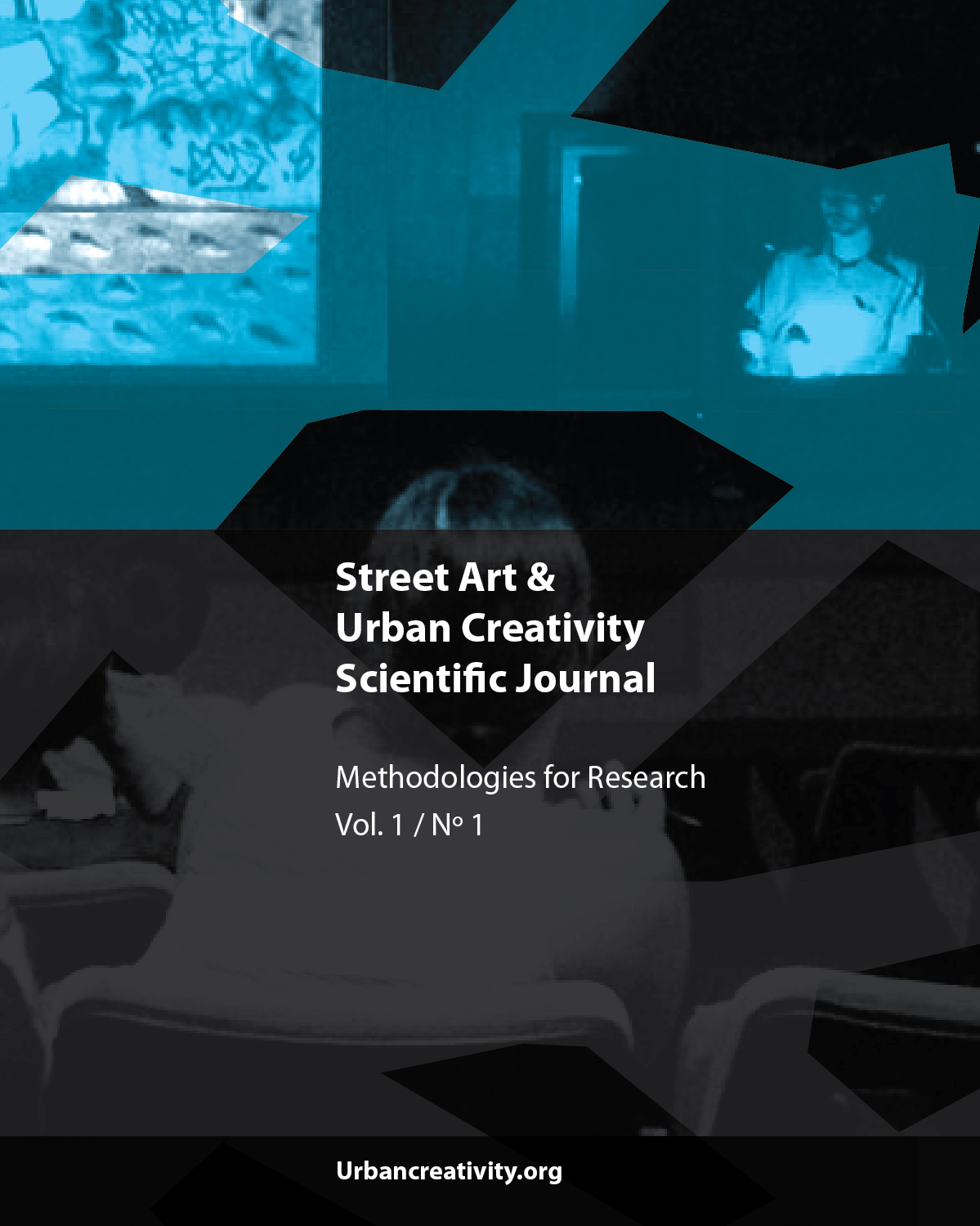Towards the scholarly documentation of street art
DOI:
https://doi.org/10.25765/sauc.v1i1.15Abstract
It is generally acknowledged that street art is a particularly ephemeral art. For instance, graffiti are usually actively removed, thus existing for sometimes only a few days. Otherwise, they deteriorate gradually due to the effects of the weather, or are eventually ‘crossed’ by other graffiti, so that they are visible for a few years at best. Therefore, the documentation of street art should be of paramount importance to researchers. In fact, a lot of photography is being carried out ostensibly to document street art, for both image databases on the Internet as well as printed books and magazines. However, for the most part, this kind of street art photography is not done by (or for) scholars but rather by (and for) the general public. In any case, this practice usually does not fulfill even the lowest scholarly standards of documentation. One can be considered lucky to find any metadata for such pictures – for example, the artist’s name, an approximate location (usually on a city or district level), or the date on which the picture was taken, if at all. Furthermore, the selection of photographed works is highly biased due to the personal tastes of the photographers or the accessibility of the work. In order for street art documentation to be useful for research, providing further data is necessary, such as a more precise location, references to other instances of the same work, and the dimensions of the work. In this article, the current inadequate state of documentation in street art research is surveyed, and a model for the online documentation of stencil graffiti is presented that demonstrates the feasibility of some of these requirements.
Downloads
Global Statistics ℹ️
|
208
Views
|
86
Downloads
|
|
294
Total
|
|
Downloads
Published
How to Cite
Issue
Section
License
Copyright (c) 2015 Street Art & Urban Creativity

This work is licensed under a Creative Commons Attribution-NoDerivatives 4.0 International License.
Those authors who publish in this journal accept the following terms:
-
Authors retain copyright.
-
Authors transfer to the journal the right of first publication. The journal also owns the publishing rights.
-
All published contents are governed by an Attribution-NoDerivatives 4.0 International License.
Access the informative version and legal text of the license. By virtue of this, third parties are allowed to use what is published as long as they mention the authorship of the work and the first publication in this journal. If you transform the material, you may not distribute the modified work. -
Authors may make other independent and additional contractual arrangements for non-exclusive distribution of the version of the article published in this journal (e.g., inclusion in an institutional repository or publication in a book) as long as they clearly indicate that the work was first published in this journal.
- Authors are allowed and recommended to publish their work on the Internet (for example on institutional and personal websites), following the publication of, and referencing the journal, as this could lead to constructive exchanges and a more extensive and quick circulation of published works (see The Effect of Open Access).













